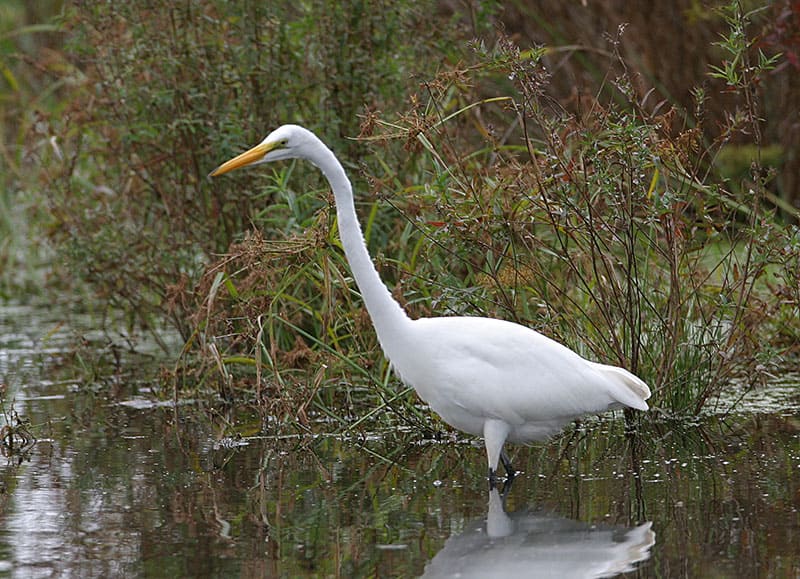Great Egrets (Ardea alba) are magnificent birds known for their stunning appearance and graceful demeanor.
These tall, white wading birds are found across much of the world, from the Americas to Europe, Africa, and Asia.
With their long, slender necks, sharp beaks, and impressive wingspans, Great Egrets are a sight to behold in the wild.
On this page
Identification
Male and female Great Egrets look identical and are indistinguishable. The only difference is that males, on average, are larger than females. These birds stand up to 3.3 feet tall, have a wingspan of 52 to 67 inches, and weigh around 1.5-3.3 pounds.
These long-legged birds have pure white plumage, a long yellowish-orange bill, and black legs. They have a slightly S-curved neck which they keep tucked in during the flight. During the breeding season, their lower legs may become lighter and their bill darker. They will also develop delicate lacy plumes called aigrettes on their back.
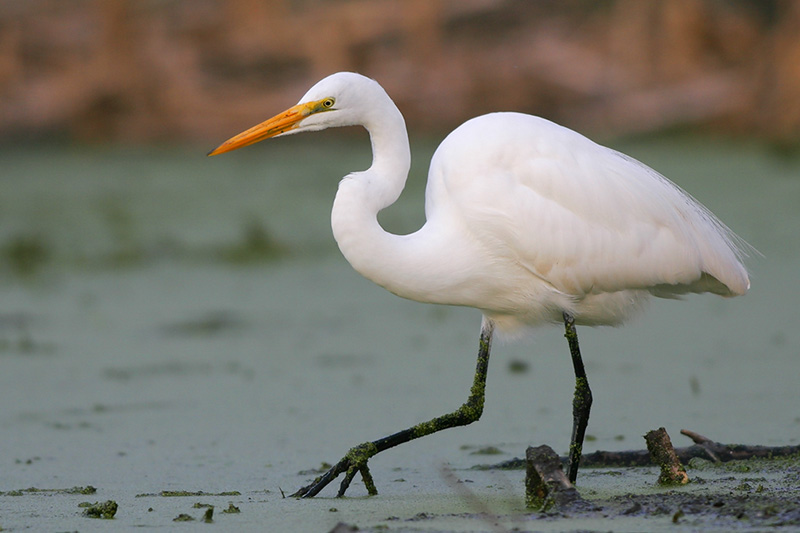
Photograph © Greg Lavaty.
Juvenile Great Egrets look similar to non-breeding adults. The only differences lie in the plumage texture and patterns, which can take good lighting, some experience, and a keen eye to identify. Although there are no reliable differences in color, juveniles tend to have paler brownish color at the top of the legs in contrast to the black legs adults have.
Related: What does finding a white feather mean?
Great Egret sounds like a creaking door. They make harsh, low, and dry corr sounds, give nasal squeals, and may snap their bills.
Food
Great Egret’s diet consists of animal matter. These carnivores mainly feed on fish, amphibians, such as frogs and salamanders, and small mammals, such as mice. They also feed on small reptiles, crustaceans, birds, and insects, such as grasshoppers, dragonflies, beetles, and aquatic insects.
Great Egrets may forage in belly-deep water, shallow water, and on dry land, although the latter is a bit rarer.
You may find them searching for food in freshwater, marine, and brackish wetlands alone or in groups with other egrets, herons, ibises, and cormorants.
They have two main hunting strategies – wading and waiting. They either wade slowly in shallow water and actively search for prey or stand completely still waiting for their prey to come near.
If their next meal is within striking distance, they thrust their bill forward, impaling or catching their prey. They may sometimes steal food from smaller birds.
Nesting and Eggs
Great Egrets are seasonally monogamous. It is not known whether the pairs stay together for more than one season. They may nest in isolated pairs but usually in colonies, often together with other similar bird species.
Great Egrets usually breed in wooded swamps or wetlands and build their nest as high up in a tree as possible. The male starts the process by building a big platform made of long sticks and twigs.
After finding a mate, the female joins him and the pair works together to complete it. The final result measures up to 3 feet in diameter and 1 foot deep. The inside is lined with plant material and forms a cup.
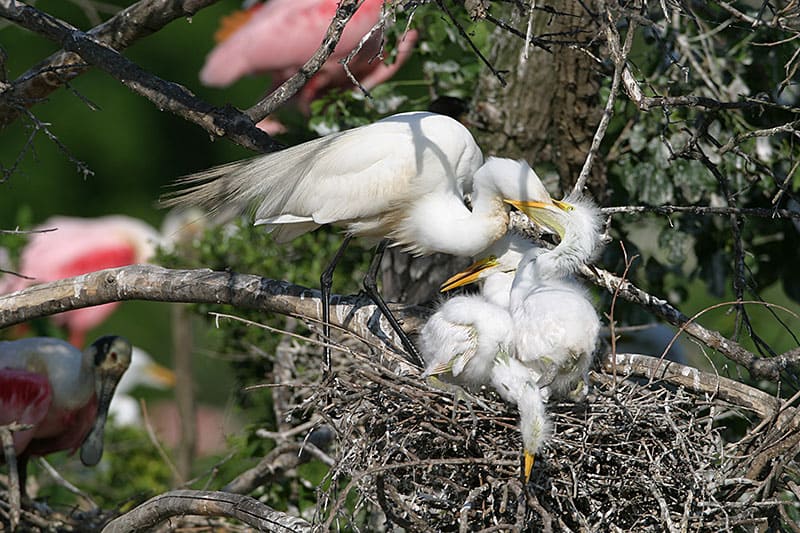
Great Egrets feeding young
The female then lays 1-6, most often 3-4 pale greenish or bluish eggs. The eggs are 2.2-2.4 inches long and measure 1.6-1.7 inches wide. Both parents incubate the eggs for about 23-27 days.
The offspring stay in the nest for 21-25 days, during which both parents take care of them and feed the young by regurgitation. Later on, the parents will hold prey over the nestling for it to grab it. Juveniles gain the ability to fly at 6-7 weeks.
Current Situation
Great Egrets range throughout almost all of the Americas. They are year-round residents in South America, the Caribbean, and along the coastline of Central America and most of the United States.
Its breeding range covers the western part of the eastern United States and it migrates to Central America for the winter. You may also meet it in other parts of the United States and even as far north as southern Canada.
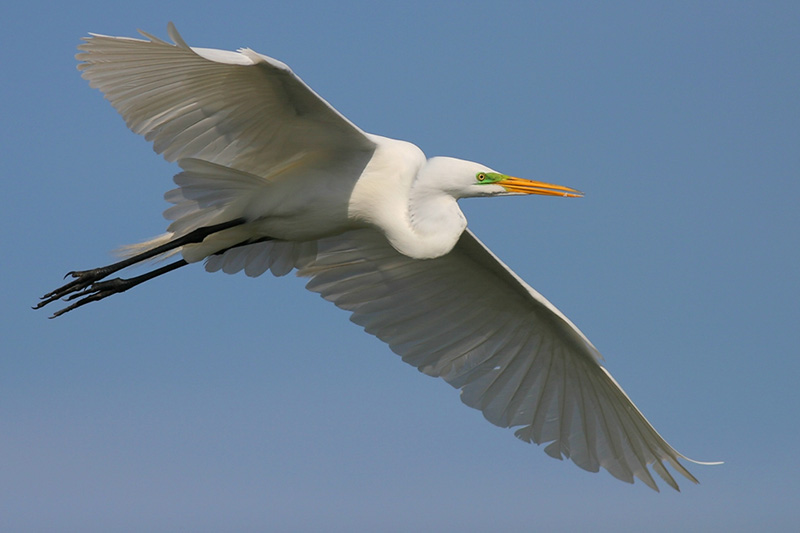
Great Egret
Great Egret habitats include almost all kinds of freshwater, brackish, and marine wetlands. You may meet it in marshes, mud flats ditches, streams, canals, and flooded farm fields, along shores, edges of lakes and ponds, rivers, shallow lagoons, and estuaries. They prefer wetlands and wooded swamps.
The Great Egret is listed as of least concern on the IUCN Red List. Its current population is numerous despite many human-induced threats, such as the loss and degradation of habitat and pollution.
Facts
- Great Egret nestlings are viciously competitive and may stab their smaller nest-mates to death. Not only that, but they will also threaten and attack intruders.
- Great Egrets were almost hunted to extinction before the 20th century and that is because of their delicate lacy breeding plumage. It was in great demand for women’s garments.
- The oldest known Great Egret lived to be 22 years and 10 months old.
- The Great Egret can be found on every continent except Antarctica. Thus, they have four subspecies with the nominate subspecies found in Europe and across the Palearctic.
- Great Egrets symbolize peace and harmony.
Similar Species
As unique and beautiful as they are, Great Egrets still have quite a few similar species. We have listed five of them and described how to differentiate between them.
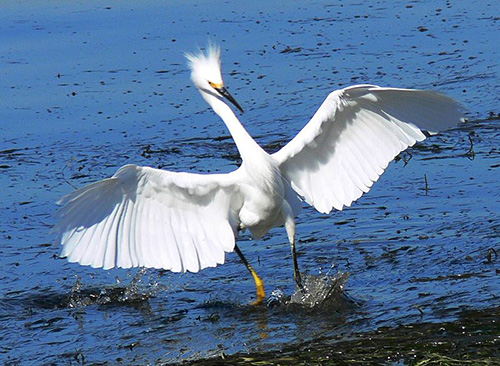
Snowy Egret
Snowy Egrets also have all-white plumage, but instead of a yellow bill, they have a black bill and their feet are yellow instead of black.
Snowy Egrets are also smaller than Great Egrets.
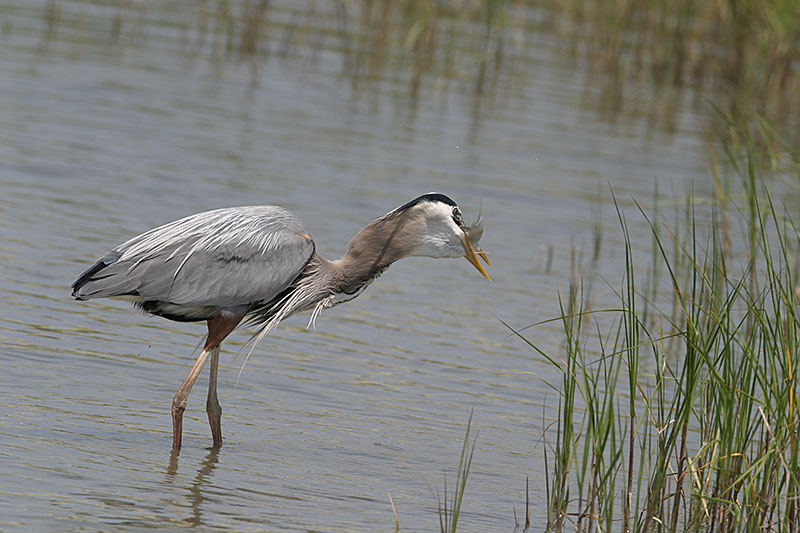
Great Blue Heron
Great Blue Herons are usually very different from Great Egrets, however, there is a subspecies native to South Florida that has a white morph.
Read more: Egret vs Heron
The white morph and Great Egret look very similar in appearance.
However, the Great Blue Herons are larger, have head plumes, a bigger bill, and lighter legs.
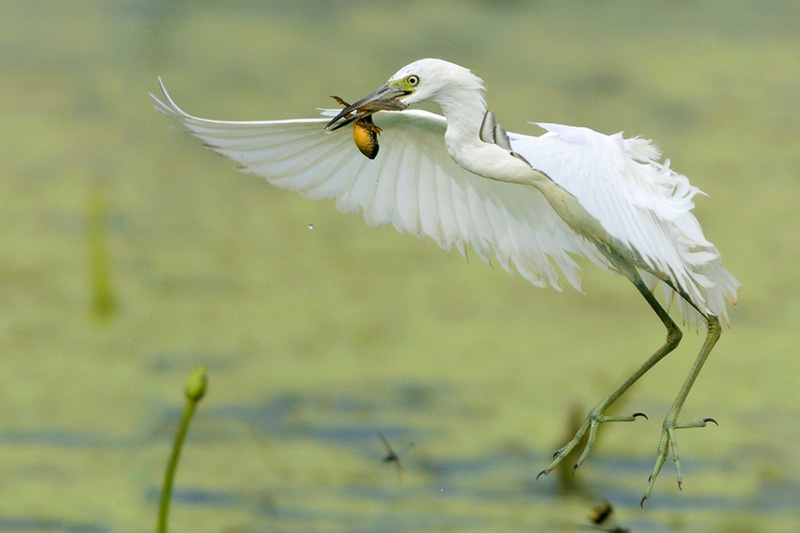
Juvenile Little Blue Heron
Juvenile Little Blue Herons are pure white.
However, they’re considerably smaller than Great Egrets and have shorter and darker bills and greenish legs.
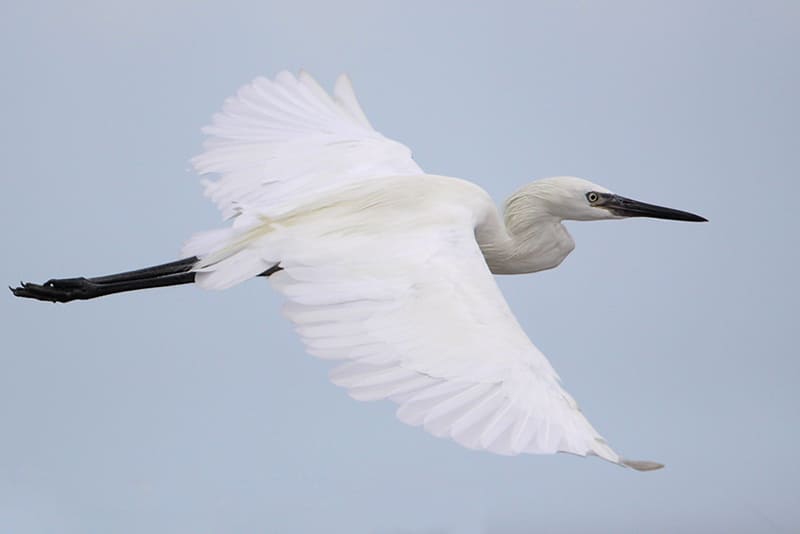
Reddish Egret
Reddish Egrets have an adult and juvenile white morph that look very similar to Great Egrets.
The white morphs are entirely white. The adult white morph has a pink bill with a black tip instead of the all-yellow bill the Great Egret has.
The juvenile white morph has a pure black bill instead of the Great Egret’s yellow one.
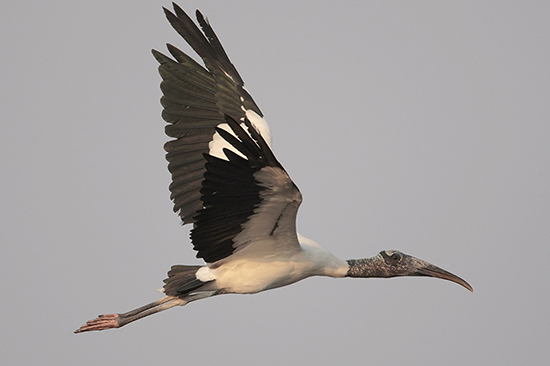
Wood Stork
Great Egrets are all-white, whereas Wood Storks have black primaries, and their heads are bare and dark.
Wood Stork’s bill is longer, curved at the tip, and dark-colored whereas their feet are pinkish.
Frequently Asked Questions
How common are Great Egrets?
Great Egrets are common in the wetlands and swamps of the southeastern United States.
Why are they called egrets?
Egret comes from the French word “aigrette” which refers to the long lacy feathers decorating an egret’s back during the breeding season.
Why are egrets always alone?
Egrets prefer to be alone because they need to stay very still and patient while hunting and other birds might disturb their prey before they can catch it.
What do great egrets eat?
Great Egrets eat fish, small amphibians and reptiles, small mammals, and different insects.
What is the lifespan of an egret?
Egrets have a life span of 15 years, although, in reality, they may die at a younger age due to predation.

